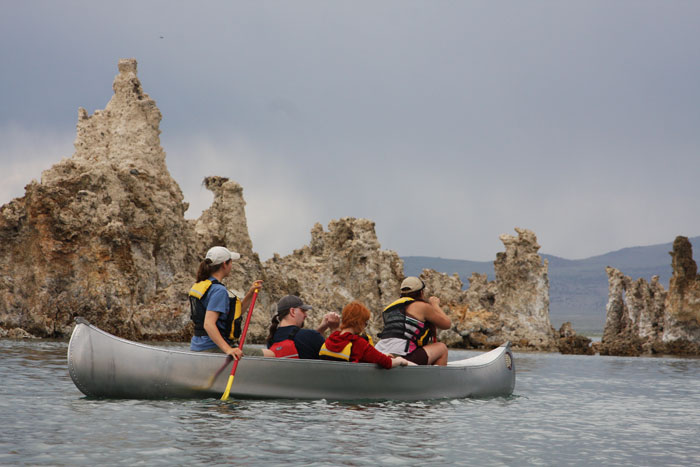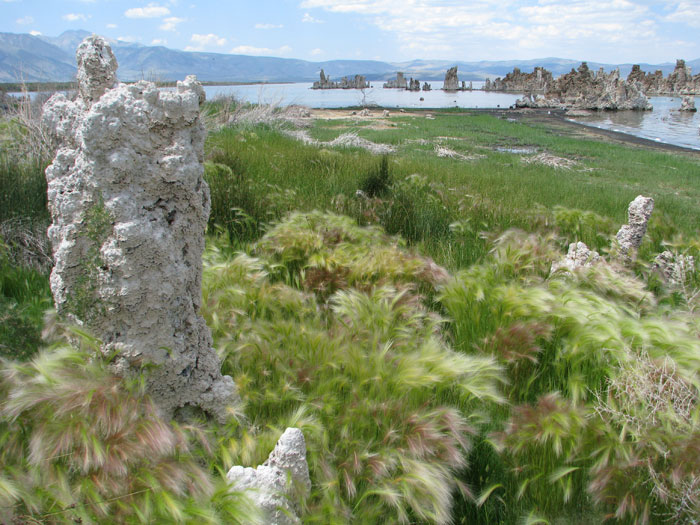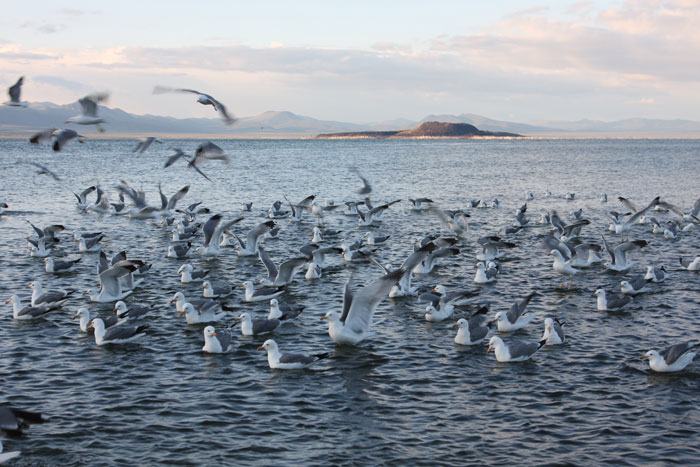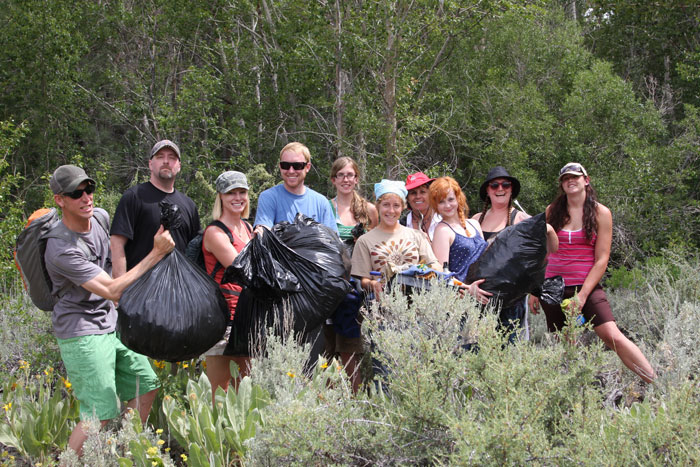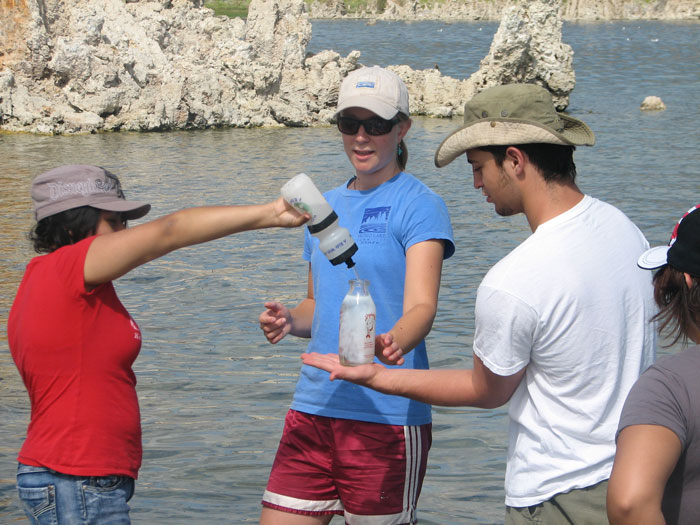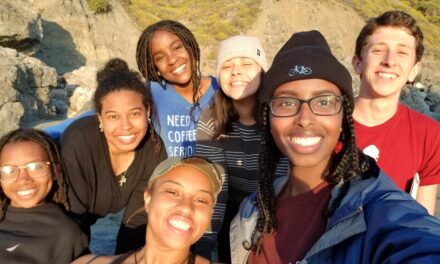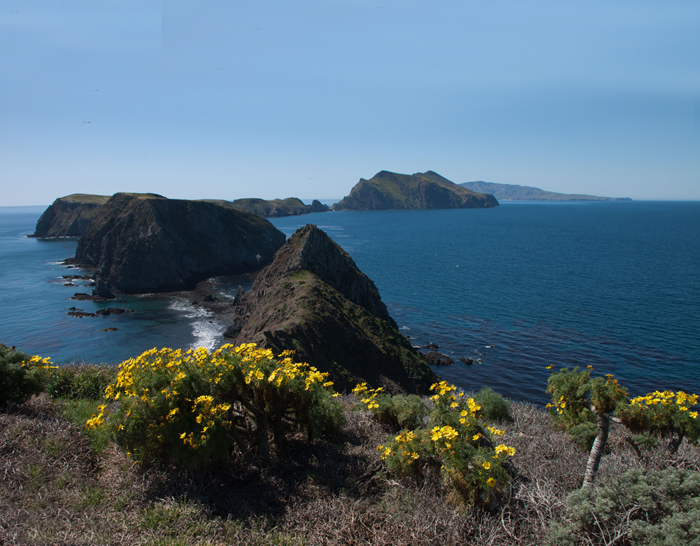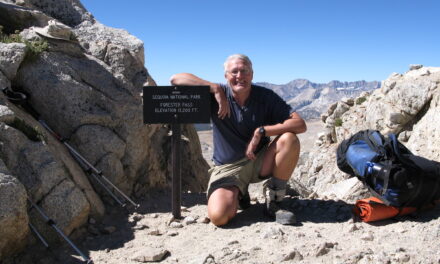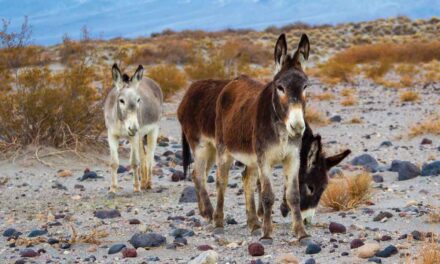- Death Valley’s Battle With Climate Extremes - 01/01/2024
- The Future of Homewood - 12/05/2023
- Kula Cloth - 10/18/2023
Mono Lake Committee safeguards California gem
Words by Leonie Sherman
Photos courtesy Mono Lake Committee
On the edge of Yosemite National Park, fifteen miles east of Tioga Pass, Mono Lake shimmers like a jewel amid the vast monochromatic expanse of the Great Basin. More than twice as salty as the ocean and over ten times as alkaline, the lake hosts hundreds of thousands of nesting migratory birds and up to 80% of the state’s nesting California Gulls. Most visitors passing through have no idea how close this rich ecosystem came to complete biological collapse.
“Mono Lake is the most significant environmental success story of its time,” says Lisa Cutting, Eastern Sierra Policy Director for the Mono Lake Committee (MLC). Started almost forty years ago by a dedicated group of visionary graduate students, the MLC has grown to thirteen full-time staff and acts as the on-the-ground watchdog of the Mono Basin. “Every conference we go to, every educational program we offer, every visitor we interact with – we assure them that grassroots activism can succeed,” Cutting continues. “Our story gives them hope.”
That story began 1941, when the LA Department of Water and Power began draining the tributaries that feed this massive basin lake. With no outlet, lake levels began dropping, allowing predators access to nesting birds. Salinity and alkaline levels increased. The lake teetered on the edge of collapse.
So that group of grad students, led by David Gaines, began advocating for the lake. “Dave used to say if he could bring everybody in the state to Mono Lake he could save it tomorrow,” says Sally Gaines, who was married to David until he passed away in 1988. So they did the next best thing. “In 1978 and ‘79, David and I went on an 18 month slide show tour of basically everybody who would listen, to tell them about Mono Lake. That’s how we got our grassroots support.”
She’s clear that it takes a village to save a lake. “Dave and I were just the folks who happened to be standing in front of the camera when people started asking questions,” she explains. “We had lots of folks volunteering full-time to get this off
the ground.”
After almost two decades of campaigning they convinced the State Water Board to invoke the public trust doctrine and State Fish and Wildlife codes to protect the lake for future generations. The 1994 State Water Board decision allowed LA to continue taking some water but protected Mono Lake through careful monitoring of lake levels.
Forecasting annual lake level is a complex calculation. LADWP was required to restore the lake level to 6392 ft., which scientists and the State Water Board estimate will take at least until 2020. When the level is above 6380, LA gets 16,000 acre feet of water a year. When the level falls below that level, as it did in 2014, LA is restricted to 4500 acre feet. If the level falls below 6377 ft., LA doesn’t get any water.
MLC has won every legal battle in the lake’s favor since their first lawsuit, thanks to pro bono work by skilled lawyers, the hard work of the staff and the tireless support of a large member base. “We are a citizens group with 16,000 members,” says Executive Director Geoff McQuilkin. “85% of our operating budget comes from member contributions.”
“Some people have been members for over ten years before they ever visit the lake,” says Sally Gaines, who is now President of MLCs Board of Directors. “The message we put out is clear, rational and scientific. We cooperate with LA, instead of fighting against them. Folks appreciate that collaborative approach.”
“Our job is to do everything possible, from a management perspective, to safeguard Mono Lake,” explains Cutting. “Protecting Mono Lake requires constant vigilance.”
It also requires a holistic approach. So in addition to legal work, the MLC assists visitors, offers educational programs, coordinates restoration projects, and conducts scientific research.
“We work on a focused recreation model,” Cutting says. “We point people to pre-identified spots that can handle large numbers of visitors and have a minimum impact on wild life, which also protects visitors who want more solitude.”
MLCs environmental programs run throughout the year, including free interpretive programs, canoe trips and field seminars that bring in ornithologists, botanists and native basket weavers. A three day bird festival draws 300 visitors each year. Weeklong environmental education courses for inner city youth bring in “kids from LA who don’t even know where their water comes from,” says McQuilkin.
“Our watershed extends all the way to LA,” explains Elin Ljung, MLCs Communications Coordinator. “We’re dealing with a human created watershed, and almost every thing we do takes that into consideration.”
Restoration efforts have stopped grazing on Cain Ranch, re-routed roads away from Rush Creek and removed tamarisk from the entire Mono Basin. Work has begun on a “hole-in-the-dam” at Grant Lake that would allow LA to release water into Rush Creek even during low-flow years. “The premise guiding our rehabilitation efforts is to recreate a functioning ecosystem,” says Cutting. “We focus on adaptive management, because this is not a static system.”
The tradition of science guiding policy continues to this day. Local and visiting scientists conduct almost constant research, “We’re all about using science to come up with solutions that work for everybody,” says McQuilkin.
By fostering a connection to the lake, MLC ensures that future generations will have the patience, persistence and commitment necessary to protect this treasure. “You might be a hiker, a photographer, a kayaker, a birder, maybe you’re just driving by and see the lake from the road,” says McQuilkin. “Just about everybody who comes here has some kind of amazing experience.”
That includes the staff of MLC, many of whom have dedicated two decades of their lives to Mono Lake. “I work with a whole community of people who have chosen this place as home,” explains Cutting. “We’re like a family. Mono Lake brings us here and keeps us connected. We’re each giving back in our own way.”
To find out more about how you can give back to Mono Lake, visit monolake.org.

